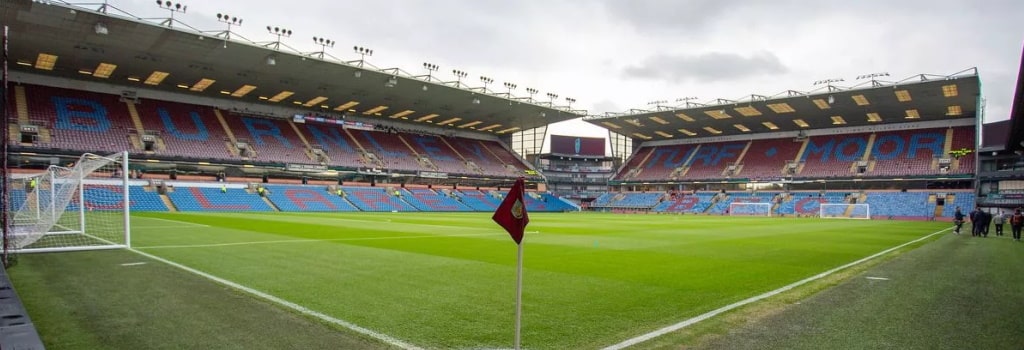

When it comes to football, the location of a club's stadium can be as iconic as the team itself. In England, many stadiums are not just sports venues but also landmarks deeply embedded in the urban fabric.
Some stadiums are so centrally located that they become a focal point for the town or city, easily accessible to fans and adding to the local atmosphere. With the help of Bet442, we take a look at some English football stadiums that are closest to the centre of their town or city.
Distance from City Centre: 0.5 miles
St James' Park is a prime example of a stadium integrated into the heart of its city. Located just a short walk from Newcastle's main shopping and entertainment districts, the stadium is easily visible from various points in the city. Its proximity to the centre means that on match days, the entire city seems to pulsate with the energy of football fans.
Distance from City Centre: 0.7 miles
Situated close to the River Wensum, Carrow Road is a stone's throw from Norwich city centre. The stadium's location makes it a central hub for fans and visitors alike, who can easily access it from the city's main areas. The vibrant atmosphere on match days spills over into the city, creating a unified sense of community and celebration.
Distance from Town Centre: 0.5 miles
Turf Moor is one of the oldest football grounds in England still in use, and its central location in Burnley highlights its historical significance. Just a short distance from the town centre, the stadium is an integral part of the local landscape. The proximity allows fans to walk from the town centre to the stadium, fostering a strong local connection to the club.
Distance from City Centre: 1 mile
Fratton Park's location near Portsmouth's city centre makes it one of the most accessible stadiums for fans. Its close proximity to the heart of the city ensures that match days are vibrant, with fans filling the nearby pubs and restaurants before heading to the game. The stadium's presence in the city centre cements its role as a key part of Portsmouth's cultural identity.
Distance from City Centre: 2 miles
While Elland Road is slightly further from Leeds city centre compared to others on this list, its impact on the city is undeniable. Just a short drive or bus ride away, the stadium is easily reachable for fans. Its location on the outskirts of the city centre means that it still benefits from the urban vibe, while also providing ample space for large crowds and facilities.
Distance from City Centre: 2 miles
Goodison Park is nestled within a residential area of Liverpool but remains quite close to the city centre. This proximity allows fans to travel easily from central Liverpool to the stadium, making match days a bustling affair throughout the city. The stadium's integration into the community exemplifies the close relationship between the club and its supporters.
Distance from City Centre: 1.5 miles
The Valley, home of Charlton Athletic, is located near the centre of Greenwich, London. Its position within the urban area allows fans easy access via public transport or on foot. The stadium's presence near the city centre helps sustain a lively match-day atmosphere, contributing to the local economy and community spirit.
Distance from City Centre: 1.5 miles
Ashton Gate's location near the heart of Bristol makes it a central part of the city's sports culture. Fans can easily walk or take a short bus ride from the city centre to the stadium. The proximity to the centre means that on match days, the area buzzes with activity, drawing fans into the local pubs and restaurants.
Distance from Town Centre: 1 mile
Located in the small town of Nailsworth, The New Lawn is close to the town centre, embodying the community-centric spirit of Forest Green Rovers. The stadium's eco-friendly design and sustainable practices make it unique, and its central location ensures it remains a focal point for the town's residents.
Distance from Town Centre: 0.5 miles
Priestfield Stadium is another example of a football ground that is deeply embedded within its town. Situated close to Gillingham town centre, the stadium is easily accessible to fans. Its central location helps maintain a strong connection between the club and the local community, making match days significant events for the town.
The proximity of a football stadium to the centre of its town or city can significantly enhance the match-day experience for fans and integrate the club into the community's daily life.
Whether it's the historic charm of Turf Moor, the vibrant atmosphere around St James' Park, or the eco-friendly allure of The New Lawn, these stadiums demonstrate the important role location plays in the cultural and social fabric of English football.
Taking my son to his first football match was one of the best experiences I've had as a father so far. I've written this article for Alex to read when he gets older.
My daughter's first ever football match - Orlando City v Atlanta United, August 2019. Written for Izzy to read when she gets old enough. Vamos Orlando
An in-depth look at the biggest football attendances ever recorded, from the 1950 World Cup to pre-season friendlies in the States and the Scottish ground with dozens of 100,000+ attendances
All good things have to come to an end, and the same unfortunately has to be said for football stadiums too. This article looks at the grounds which are soon to host their last match, the stadiums whose days are numbered and where fans will be watching their football from next.
